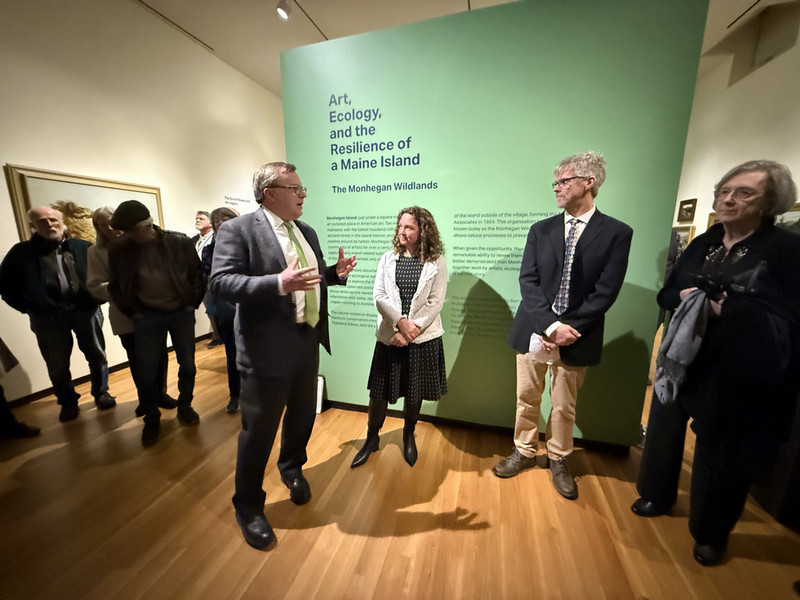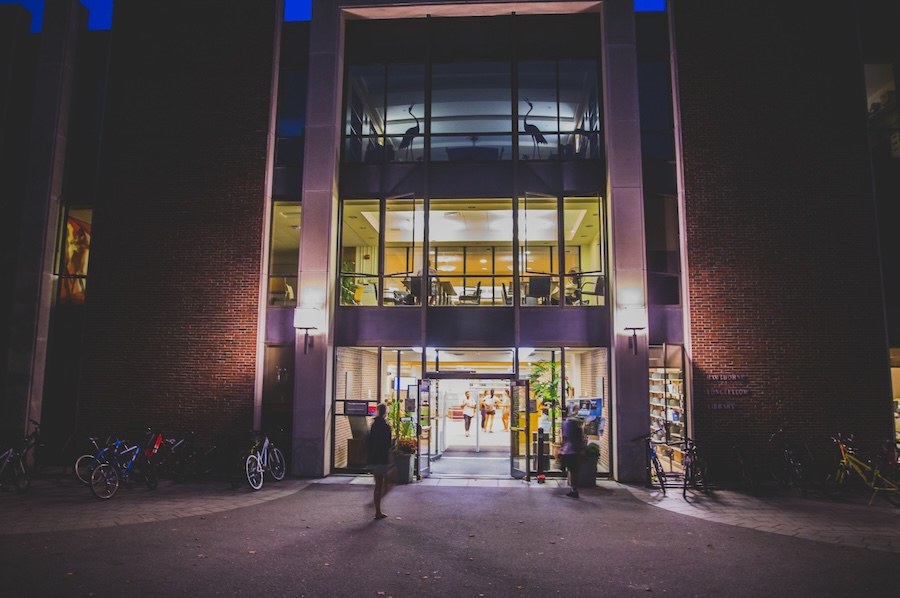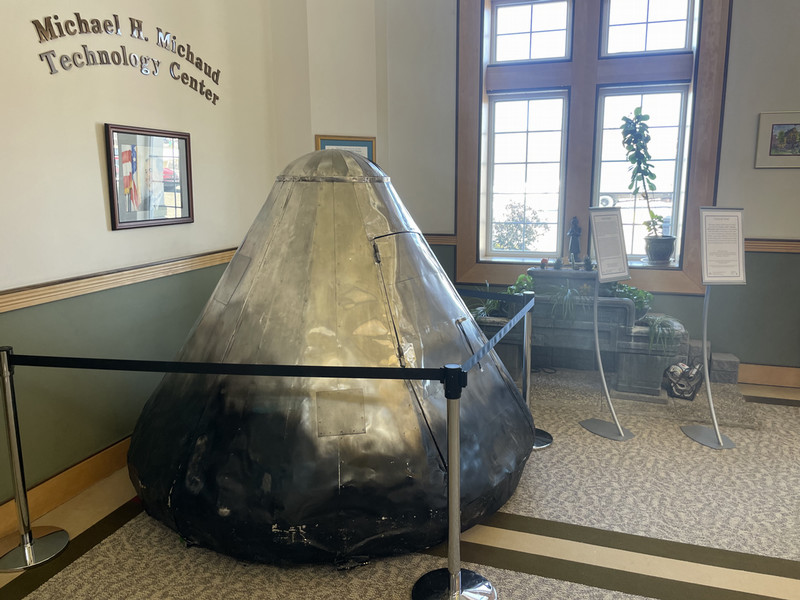Artwork at the Museum of Art: Student Choice – Blanche Froelich '19
By Bowdoin College Museum of Art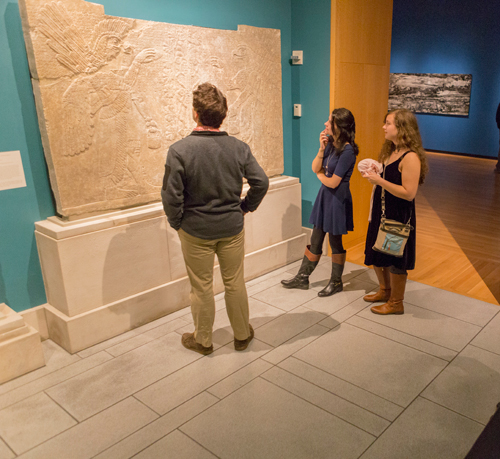
The Assyrian Gallery at the Bowdoin College Museum of Art
Of the many artifacts in the BCMA’s collection, the Assyrian reliefs hold a special place in my heart. These reliefs, carved between 875 BCE and 860 BCE in the city of Kahlu (present day Iraq), are five of over 200 polychromatic reliefs created to adorn the palace of Emperor Ashurnasirpal II. They were collected by Dr. Henri Byron Haskell (Medical School of Maine, 1855) and arrived at Bowdoin in 1860 as the first objects in the BCMA’s ancient collection.
Working as an educational assistant at the Museum this semester, I have been especially intrigued by the relief depicting the Winged Spirit or Apkallu Anointing the Emperor because of the insight it provides into the layered history of the region. Strategic damage to the emperor’s heel, hands, and face are remnants of a successful Babylonian invasion into the Assyrian Empire in 612 BCE. These damages were meant to symbolically rob the king of his faculties, identity, and power. In the upper right corner of the slab, one can see the mysterious beginnings of another carved profile facing the emperor, perhaps an indication of the ruler who replaced Ashurnasirpal II.
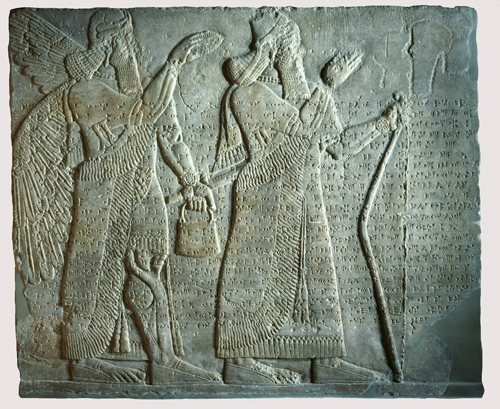
In the spring of 2015, ISIS released images and video of the ancient site where this work once resided being systematically destroyed with explosives and power tools. Modern destruction of sites such as the palace at Kahlu suggests that these art objects still hold a great deal of power in defining culture and in recalling the past. To destroy them is an attempt to abolish a part of the world’s cultural heritage. In light of these events, I’m particularly grateful to be able to study these objects at Bowdoin. To me, these reliefs not only give us a deeper understanding of the history of the Near East, but they also suggest the importance and power of visual representation in societies through time.
Blanche Froelich, Bowdoin class of 2019

